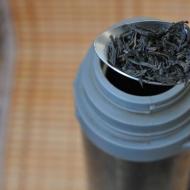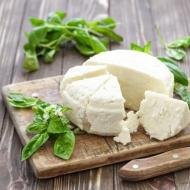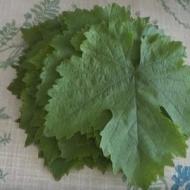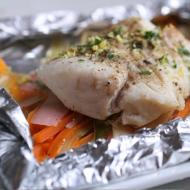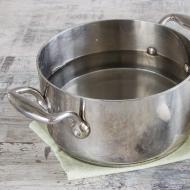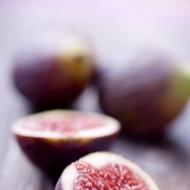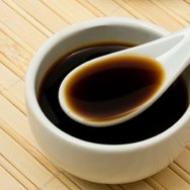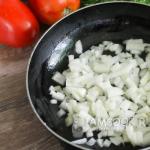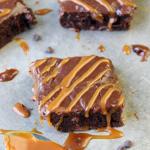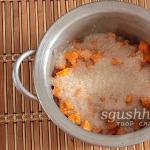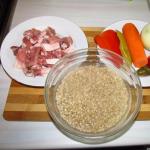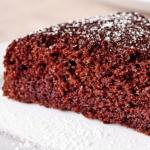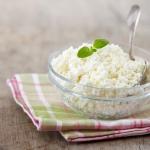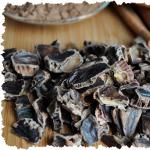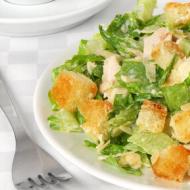
Wheat flour. Caloric content wheat flour of the highest grade The most useful flour is other types
With diabetes and the need to follow a diet, doctors recommend minimizing the use of flour. Due to the high calorie content and the presence of starch, it is most often excluded from the daily diet.
However, there are certain types that have a low calorie content and are indicated for use by diabetics and people suffering from excess weight.
Calorie table of different types of flour
The calorie content of flour and BJU (proteins / fats / carbohydrates) varies depending on the type of product.
Common species with nutritional information:
| View | Calories (100 g) | BJU (100 g) |
| Wheat (top grade) | 339 | 11/1,4/70 |
| Wheat (coarse grinding) | 312 | 11/1,5/65 |
| Wheat (whole grain) | 302 | 13/1,5/58 |
| rye | 295 | 12/2/35 |
| coconut | 456 | 20/15/60 |
| Almond | 606 | 26/54,5/13 |
| Rice | 365 | 6/1,5/85 |
| corn | 325 | 7/2/76 |
| oatmeal | 375 | 12/6/60 |
| barley | 300 | 9/1/60 |
| linen | 273 | 36/10/5 |
| chickpea | 389 | 22,2/7/58 |
| Buckwheat | 349 | 13,8/1/,72 |
| pea | 292 | 9/1,7/61 |
| Pumpkin | 301 | 33/9/22 |
| spelled | 150 | 12,/0,7/25 |
| bird cherry | 120 | 7,8/0/21 |
| amaranth | 293 | 9/1,7/60,5 |
| Sesame | 468 | 46/12/30 |
Low-calorie varieties are bird cherry and spelled. If you're more used to wheat, the whole grain variety is recommended.
What flour is good for diabetics and losing weight?
- soy- contains protein, strengthens bone and cartilage tissue, muscle corset;
- corn- contains vitamins A and E, improves bile outflows, stabilizes the gastrointestinal tract, makes the vessels and arteries of the heart muscle strong and durable;
- buckwheat- stabilizes the amount of glucose in the blood;
- oatmeal- reduces cholesterol, normalizes the work of the stomach;
- linen- cleanses from decay products, toxins, starts accelerated food processing, promotes weight loss;
- coconut- accelerates the breakdown of fat cells, gives a feeling of satiety and suppresses hunger, fights constipation and stabilizes the digestive tract;
- almond- lowers cholesterol levels, starts the body's natural production of insulin, cleanses the kidneys, protects blood vessels, prevents the absorption and deposition of carbohydrates.
What foods should be restricted?

Diabetics should avoid high-grade flour, as it contains a lot of calories. This variety is considered the least useful from a dietary point of view, as it inhibits digestion and complicates the digestion of food.
Note! Despite the lower calorie content of whole grain flour, it contains the same starch. Therefore, even limiting it in the daily diet will lead to an increase in blood sugar and weight gain.
Rice flour, although it contains many trace elements, is not considered healthy due to the presence of dietary fiber. Therefore, its amount in the diet must be reduced to a minimum, replacing it with species that are valuable from the point of view of healthy nutrition.
Why is white wheat flour harmful?
Wheat flour has more harm than good. Regardless of the variety, it does not exclude dietary fiber, affects health and leads to weight gain.
This simple, refined product contains gluten, a protein derivative of gluten that sticks together the contents of cereals and provokes diseases.
Note! With regular use of dough from flour of the highest grades, people can develop celiac disease, that is, gluten intolerance, over time, for this reason it is important to reduce the frequency of their use and monitor nutrition.
The content of gluten will depend on the variety, grinding of the product: it is usually higher in high-class varieties.
What can replace white wheat flour?
A profitable solution for the daily menu of diabetics is the complete elimination of the product, but often the majority of patients are not capable of such sacrifices.

An alternative in this case would be to replace wheat flour with useful types:
- spelled;
- spelt;
- coarse buckwheat;
- bran;
- cereals;
- airy cookies and bread.
The most useful flour - other types
Flour itself is high in calories, so people with diabetes or overweight are advised to consume a strictly limited amount of it per week.
The best option is up to 500 kcal per week. Useful varieties that are preferable to use instead of the classic look are buckwheat, spelt, oatmeal, rye and others.
Spelled or spelt

One of the cleanest and lightest whole grain varieties of the product. Produced from wheat germ, it is rich in healthy protein and nutritious fibers.
The proteins in its composition differ in structure, are absorbed faster and do not provoke an allergic reaction. It is suitable for diabetics, allergy sufferers and those with complete gluten intolerance.
Rye peeled, or wallpaper, flour

It is considered the roughest and most sticky, does not undergo deep processing. Rye flour contains the whole parts of the grains along with the shells.
Therefore, this variety is considered more beneficial for the body, digested faster and absorbed without complications, does not slow down metabolism, and helps cleanse the body.
Coarse wheat wallpaper
This variety is different from the usual white flour, it is obtained from refined, natural whole grains of wheat.
Note! On the territory of the Russian Federation, there are 3 factories producing flour of this grade: the agro-complex "Solnechny", "Belovodie" and "Diamond". When making a purchase, make sure that there is a special ecotest mark on the packaging.
This cooking method preserves all the valuable vitamins and minerals found in regular flour, while reducing the gluten and starch content. Suitable for homemade lean and sweet pastries.

A dietary option for those who cannot do without baked goods. Made from buckwheat grain. Unlike other varieties, it contains the lowest percentage of starch and a fairly high content of vitamins.
Suitable for baking muffins, buns, pancakes and sweet pastries.

It has a pleasant taste, a lot of nutrients in the composition. Due to its excellent taste and combination with other ingredients, it can easily replace the usual white flour.
Suitable for baking muffins, sweets, pancakes and many dietary dishes.

A natural source of protein, cereals and valuable dietary fiber.
It saturates the body and has a positive effect on weight loss, allows you to cleanse the body of toxins, remove excess water, and speed up metabolism.
It does not contain gluten, so it is suitable for diabetics, allergy sufferers, overweight people and those suffering from celiac disease.
Flax flour
This variety contains up to 30% fiber and is a source of healthy dietary fiber. Therefore, its use cleanses the body, stabilizes the work of the digestive organs and intestines.
This composition makes this variety one of the best for a healthy diet and getting rid of extra pounds.
Rice flour
It is rich in calcium, fluorine, folic acid, so the use of rice flour will help to gently cleanse the intestines and improve digestion.
Minus - excessive use leads to constipation. Therefore, it must be consumed in moderation.
Conclusion
Flour is a source of fiber and useful elements. Therefore, even with weight loss or diabetes, it should be included in the daily diet, but in moderation.
By choosing more healthy varieties of flour, you can delight yourself with delicious and at the same time dietary pastries.
Calories, kcal:
Proteins, g:
Carbohydrates, g:
Flour is a food product obtained from grains of cereals by grinding. Flour is produced from grains of various crops, most often wheat. There is also flour,. The latter varieties are not so common.
In the manufacture of flour, the grain is first cleaned from the shell, then ground. The central part of the grain contains carbohydrates. Gluten is the protein component of flour. Flour is a versatile product that allows you to diversify the human diet, has great potential for cooking delicious food. It is present in every home as a necessary product.
Wheat flour is made from grains, one of the most common cereal plants. Wheat flour is a powdery product with various grain sizes, it is white with shades of yellow or gray, depending on the degree of grinding. Wheat flour has a pleasant bread aroma, almost tasteless.

Wheat flour calories
The calorie content of wheat flour is 342 kcal per 100 grams of product.
Composition and useful properties of wheat flour
Wheat flour contains dietary fiber, which is most in wholemeal flour and. Fiber helps to normalize digestive processes and gently cleanse the walls of the intestines and stomach from toxins and toxins. The product is a carbohydrate, and may contain both simple carbohydrates () and complex (). Wheat flour is saturated, which are responsible for the activity of the nervous system and improve the condition of the skin, hair and nails (calorizator). The product also contains minerals: necessary for the normal functioning of the body.
Harm of wheat flour
Wheat flour contains, so people with gluten intolerance need to replace wheat flour with gluten-free counterparts. Wheat flour is a high-calorie product, the excessive consumption of which can lead to a set of extra pounds.

Types and varieties of wheat flour
According to the degree of grinding, the following types of wheat flour are distinguished:
- coarse grinding- flour is made from whole grains, including bran and cell membranes, flour particles are quite large, contain dietary fiber;
- fine grinding- flour is produced only from the internal endosperm, the flour particles are small, the composition contains starch and gluten, there is practically no fiber.
By grade, flour is divided into:
- Krupchatka- small grains, produced from the endosperm of grains of special varieties of wheat, have a light cream color and high baking properties. It is used for making rich pastries, Easter cakes, etc.
- Top grade- very small particles of endosperm (powder) of white color, used in the production of baking and as a thickener in sauces;
- First grade- fine particles of fine grinding, white with a yellowish tint, suitable for non-baking pastries, making dough for noodles, dumplings and dumplings, sautéing, used mainly in the production of bread products;
- Second grade- grain shell particles, wholemeal flour with whiter large particles of white color with a grayish or yellowish tinge are added to the endosperm particles. Table varieties of white bread and inedible pastries, gingerbread, cookies are baked from such flour;
- wallpaper- consists of crushed grain, including the bran shell. The particles are large, heterogeneous in size, contain the most protein and vitamins. It is used for the production of table breads that do not stale for a long time.
See more about flour in the video clip "Rye flour vs. wheat flour" of the TV show "Live healthy!".
Selection and storage of wheat flour
Depending on the goals and needs, flour of various varieties is chosen, but the selection rules are similar - the flour should be free to pour, not have lumps, musty and moldy smells. Store wheat flour in tightly closed glass or ceramic containers, in a cool place, according to the expiration date indicated on the package.
Wheat flour in cooking
At home, it is wheat flour that is most often used, pastries, pies, pancakes and pancakes, dough for dumplings are prepared from it, and flour is used as a breading for fish, meat and poultry, added to sauces, julienne, passivation.
For more information about wheat flour from 5 different manufacturers, see the video clip "Wheat Flour" of the TV show "Natural Selection".
Especially for
Copying this article in whole or in part is prohibited.
When losing weight and diabetes, you need to completely abandon premium wheat flour due to the high calorie content of this product and the high content of starch in it. Low-calorie types are corn, spelled, buckwheat, rye and flax flour. From these types, you can prepare a variety of pastries, which in terms of taste are in no way inferior to products made from white wheat flour. Useful for weight loss is coconut and almond flour, because these products contain a lot of fiber and polyunsaturated fats, which speed up metabolism and are necessary for the normal functioning of the human body.
STAR SLIMMING STORIES!
Irina Pegova shocked everyone with a weight loss recipe:"I threw off 27 kg and continue to lose weight, I just brew for the night ..." Read more >>
Calorie table of different types of flour
The calorie content of different types of flour, nutritional value, proteins, fats, carbohydrates (BJU) are presented in the table:
| Type of flour | Calorie content (kcal per 100 grams) | BJU (g per 100 grams) |
|---|---|---|
| barley | 300 | 9/1/64 |
| oatmeal | 375 | 12/6/59 |
| coconut | 456 | 20/16/60 |
| Almond | 608 | 26/54,5/13,2 |
| soy | 384 | 45/11,5/22,4 |
| rye | 295 | 12/2/36 |
| Wheat premium | 339 | 11/1,4/70 |
| Whole wheat | 313 | 11/1,5/65 |
| Whole grain wheat | 303 | 13,4/1,6/58 |
| corn | 327 | 7/2/78 |
| Rice | 365 | 6/1,5/80 |
| Buckwheat | 349 | 13,8/1/72 |
| linen | 271 | 36/10/6 |
| chickpea | 389 | 22,2/7/58,1 |
| Spelled | 288 | 10,5/1,2/54,5 |
| spelled | 149 | 12/0,7/24 |
| amaranth | 293 | 9/1,7/61,5 |
| pea | 293 | 21/2/48 |
| Pumpkin | 300 | 33/9/23 |
| bird cherry | 120 | 7,8/0/21 |
| Quinoa | 370 | 14/6/57 |
| Sesame | 468 | 46/12/31 |
| Peanut | 595 | 25/46/14 |
| Hemp | 293 | 30/8/24,8 |
The most low-calorie foods are bird cherry and spelled flour. The first is made from naturally dried (in the sun) bird cherry fruits and is a storehouse of useful substances. It contains tannins, organic acids, sugars, antioxidants - flavonoids, vitamins C and P. From this product, you can prepare dietary confectionery and unsweetened pastries. Bird cherry flour does not contain fat and a low amount of carbohydrates.
Spelled is made from grain, which belongs to the wheat family, but fats from it are absorbed by the body faster and carbohydrates in spelled contain almost three times less than in ordinary high-grade flour products.
Of all types of wheat flour, whole wheat flour is the healthiest because it contains the same vitamins and minerals found in wheat grains themselves. It can be used for baking bread, buns, and also used instead of premium flour when baking pancakes.
What flour is good for diabetics and losing weight?
| View | Useful action |
| rye | Contains lysine, which is involved in tissue regeneration processes |
| corn |
|
| Buckwheat | Normalizes blood sugar levels |
| soy | High-protein food that helps strengthen the skeletal system and muscle corset |
| amaranth | Contains the antioxidant squalene, which prevents the occurrence and development of cancer |
| oatmeal |
|
| Pumpkin | Promotes antioxidant activity of cells and lowers blood sugar levels |
| chickpea | It contains a lot of protein and satisfies the feeling of hunger for a long time, therefore, if you follow a diet for weight loss, you can cook pastries from such flour. |
| linen | Helps to cleanse the body of toxins and toxins and promotes rapid weight loss |
| coconut |
|
| Almond | Especially useful for diabetics and people who are on a diet, because:
In order not to gain extra pounds, you can not abuse nut flour. The daily norm for an adult is 40-70 grams |
Wheat bran and whole grain wheat flour are also suitable for dietary nutrition.
What foods should be restricted?
Both people with diabetes and those who are losing weight should avoid high-grade wheat flour from the diet, as it contains a huge amount of starch and calories, which contribute to high blood sugar levels and weight gain.
The total calorie content of premium wheat flour per 100 grams is 335 kcal, including 100 g of the product contains:
- proteins - 10.7 g (42 kcal);
- fat - 1.2 g (14 kcal);
- carbohydrates - 70 g (279 kcal).
The vitamin composition of wheat flour is represented by choline, vitamin PP, vitamins H, E, B9, B6, B5, B2, B1.
A feature of premium wheat flour is a particle diameter of less than 40 microns. This product contains almost no fiber. Flour of the highest grade is airy, characterized by softness, but not useful for weight loss due to the large number of calories.
Such a product is the worst excreted from the body, significantly inhibiting the work of the intestines and the digestive system.
For the preparation of flour dishes, it is important to know how much wheat flour is placed in certain containers. So, in 1 teaspoon 10 g of flour, one tablespoon contains 30 g of the product, and 1 cup - 155 g.
Good quality wheat flour is quite a useful product. With its balanced use, the body is saturated with all the necessary vitamins, minerals, the work of the gastrointestinal tract is normalized.
Wheat flour is an effective tool for stimulating the formation of blood cells. In case of refusal of this product, the condition of the skin worsens, there are failures in the absorption of nutrients.
Wheat flour of the highest grade is an indispensable component of most flour dishes. This product is used for the preparation of sweet flour desserts, pies, pancakes, as well as "serious" food - chebureks, dumplings, pasta, bread.
Harm of wheat flour
Speaking about the harm of wheat flour, one cannot fail to note its rather high calorie content. This product is indicated in very limited quantities for people with excess weight, diabetes, as it contains a lot of gluten - a vegetable protein that ensures flour particles stick together when kneading. In the stomach, gluten becomes something like a paste, interfering with the normal functioning of the digestive system.
Thus, the high calorie content of wheat flour and its saturation with gluten make this product quite harmful. If you cannot completely give up wheat flour, be sure to control the amount of it in your diet.
So that wheat flour dishes do not harm the figure, use the “1 tooth” principle, popular with Italians. The share of flour foods in the diet should not be more than 10 - 15%. In this case, you will always have a slim and taut waist.
Choosing high quality wheat flour
When choosing wheat flour of the highest grade, one should definitely pay attention to such product properties as ash content, moisture content and gluten content.
The optimum moisture content of wheat flour does not exceed 15%. The ash content should be at the level of 0.55%, and the saturation of the product with gluten should be at least 24%. With insufficient gluten content, you may encounter poor quality food made from flour.
When studying the composition, pay attention to the expiration date of wheat flour. Packed flour of the highest grade is stored for 12 months in a dry, clean place and at an ambient temperature of no more than 18 ° C.
INTERESTING THEMATIC VIDEO
Whole wheat flour rich in vitamins and minerals such as: vitamin B1 - 33.5%, vitamin B5 - 12.1%, vitamin B6 - 20.4%, vitamin B9 - 11%, vitamin PP - 24.8%, potassium - 14, 5%, magnesium - 34.3%, phosphorus - 44.6%, iron - 20%, manganese - 203.4%, copper - 41%, selenium - 112.4%, zinc - 21.7%
Benefits of Whole Wheat Flour
- Vitamin B1 is part of the most important enzymes of carbohydrate and energy metabolism, providing the body with energy and plastic substances, as well as the metabolism of branched-chain amino acids. The lack of this vitamin leads to serious disorders of the nervous, digestive and cardiovascular systems.
- Vitamin B5 participates in protein, fat, carbohydrate metabolism, cholesterol metabolism, the synthesis of a number of hormones, hemoglobin, promotes the absorption of amino acids and sugars in the intestine, supports the function of the adrenal cortex. A lack of pantothenic acid can lead to damage to the skin and mucous membranes.
- Vitamin B6 participates in the maintenance of the immune response, the processes of inhibition and excitation in the central nervous system, in the transformation of amino acids, the metabolism of tryptophan, lipids and nucleic acids, contributes to the normal formation of red blood cells, maintaining a normal level of homocysteine in the blood. Insufficient intake of vitamin B6 is accompanied by a decrease in appetite, a violation of the condition of the skin, the development of homocysteinemia, anemia.
- Vitamin B9 as a coenzyme involved in the metabolism of nucleic and amino acids. Folate deficiency leads to disruption of the synthesis of nucleic acids and protein, resulting in inhibition of cell growth and division, especially in rapidly proliferating tissues: bone marrow, intestinal epithelium, etc. Insufficient folate intake during pregnancy is one of the causes of prematurity, malnutrition, congenital deformities and developmental disorders of the child. A strong relationship was shown between the level of folate, homocysteine and the risk of cardiovascular disease.
- Vitamin PP participates in redox reactions of energy metabolism. Inadequate vitamin intake is accompanied by a violation of the normal state of the skin, gastrointestinal tract and nervous system.
- Potassium is the main intracellular ion involved in the regulation of water, acid and electrolyte balance, is involved in the processes of nerve impulses, pressure regulation.
- Magnesium participates in energy metabolism, synthesis of proteins, nucleic acids, has a stabilizing effect on membranes, is necessary to maintain calcium, potassium and sodium homeostasis. Lack of magnesium leads to hypomagnesemia, increased risk of developing hypertension, heart disease.
- Phosphorus takes part in many physiological processes, including energy metabolism, regulates the acid-base balance, is part of phospholipids, nucleotides and nucleic acids, is necessary for the mineralization of bones and teeth. Deficiency leads to anorexia, anemia, rickets.
- Iron is a part of proteins of various functions, including enzymes. Participates in the transport of electrons, oxygen, ensures the occurrence of redox reactions and activation of peroxidation. Insufficient consumption leads to hypochromic anemia, myoglobin deficiency atony of skeletal muscles, increased fatigue, myocardiopathy, atrophic gastritis.
- Manganese participates in the formation of bone and connective tissue, is part of the enzymes involved in the metabolism of amino acids, carbohydrates, catecholamines; necessary for the synthesis of cholesterol and nucleotides. Insufficient consumption is accompanied by growth retardation, disorders in the reproductive system, increased fragility of bone tissue, disorders of carbohydrate and lipid metabolism.
- Copper is part of the enzymes that have redox activity and are involved in the metabolism of iron, stimulates the absorption of proteins and carbohydrates. Participates in the processes of providing tissues of the human body with oxygen. Deficiency is manifested by violations of the formation of the cardiovascular system and skeleton, the development of connective tissue dysplasia.
- Selenium- an essential element of the antioxidant defense system of the human body, has an immunomodulatory effect, participates in the regulation of the action of thyroid hormones. Deficiency leads to Kashin-Bek's disease (osteoarthritis with multiple deformities of the joints, spine and limbs), Keshan's disease (endemic myocardiopathy), and hereditary thrombasthenia.
- Zinc is part of more than 300 enzymes, is involved in the synthesis and breakdown of carbohydrates, proteins, fats, nucleic acids and in the regulation of the expression of a number of genes. Insufficient intake leads to anemia, secondary immunodeficiency, liver cirrhosis, sexual dysfunction, and fetal malformations. Recent studies have revealed the ability of high doses of zinc to disrupt the absorption of copper and thereby contribute to the development of anemia.
You can see a complete guide to the most useful products in the application.

